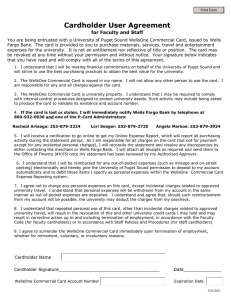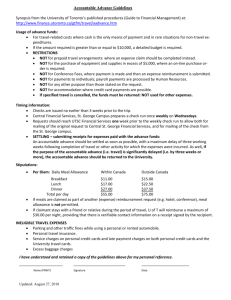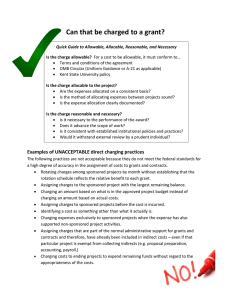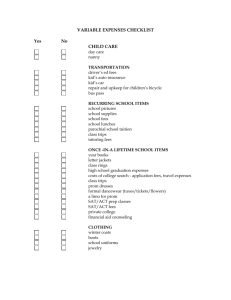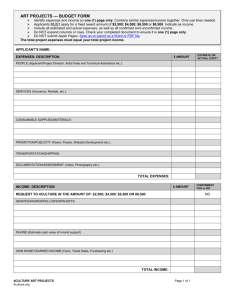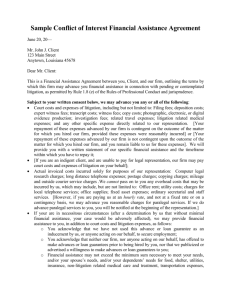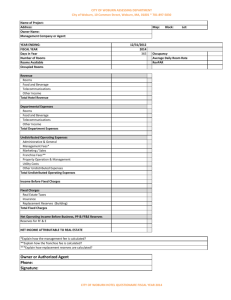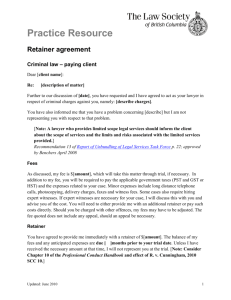Potential Problems
advertisement
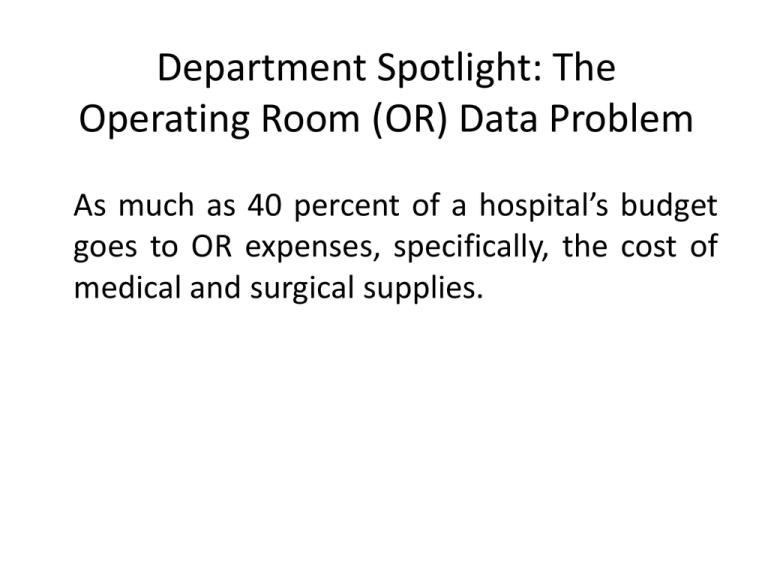
Department Spotlight: The Operating Room (OR) Data Problem As much as 40 percent of a hospital’s budget goes to OR expenses, specifically, the cost of medical and surgical supplies. One of the main difficulties with capturing charges in the OR is determining the methodology best suited for your institution. There are two typical ways to capture charges: inclusion and exclusion. Inclusion: consists of documenting every item that was used to perform the procedure and charging accordingly. Exclusion: involves listing all materials that could possibly be used during a procedure, crossing off all unused items, and billing for the remaining supplies. Potential Problems As with any process, there is a potential for problems to surface. When charging for procedures in the Operating Room, some items may be left off the list of items used/unused, some may be repeated multiple times and go unnoticed, and some may be recorded under different names, causing inaccurate records. Capturing Success That said, there are steps that facilities can take to resolve chargecapture inaccuracies and ensure a successful process in the OR: • Maintain accuracy of the OR case schedule. Verify that the scheduled number of cases coincides with the number of completed cases to avoid discrepancies, taking into account any cancellations. • Anticipate charges by reviewing surgical cases each day, and efficiently capture expenses to process billing correctly and in a timely manner. • Keep item numbers linked with the current contracts to maintain effective pricing controls. • Establish a system that ensures process controls for billing procedures. For accurate charges, those responsible for reconciling OR expenses should not also be responsible for documenting costs to patients. • Catch charge-capture errors early in the process so they can be corrected before bills are sent to patients. This is most effective when the staff is retrained regarding charge capture and compliance sooner rather than later to stop errors and inconsistencies. BEST PRACTICES: MANAGING MATERIALS, EXPENSES, AND RESOURCES In 2003, six key factors of best hospital materials management practices were recognized at the AHRMM annual conference as ways to reduce expenses and improve quality of care. 1. Control dollars, not just materials. Do not limit yourself strictly to the materials side of the supply chain. Consider that materials must be available at the right time, in the right place, and that there must be an adequate, cost-controlled supply of these materials and sufficient equipment to attend to patient needs. 2. Work together with physicians and nurses. Strong collaboration and communication among purchasers, physicians, management, and staff must be present if any process is to have significant, lasting, positive effects. 3. Take into account total expenses, not just the rate. All individuals involved in the decision-making process of materials should be aware of the total expenses for supplies and equipment. Determine the true cost of inventory rather than just the dollar amount. One product may appear to have an affordable price point and be within your budget, but make sure to identify additional charges such as ordering costs, carrying costs, shipping, delivery, etc. 4. Establish cohesive and organized policies and procedures. With consistent and well-organized guidelines, you reduce the risk of overspending and guarantee constant stock quality. 5. Have a unified and structured process instead of a department emphasis. Similar to the previous item, your methodology should be uniform across the hospital, rather than department-specific. Inventory management practices in the ER should have the same management practices as those in the pharmacy, surgical services, radiology, and so on. 6. Create processes with a team mentality in mind, not individually focused. Even though it is necessary to employ specialists in materials management, goals should be teamoriented and should not reflect the preferences of an individual

